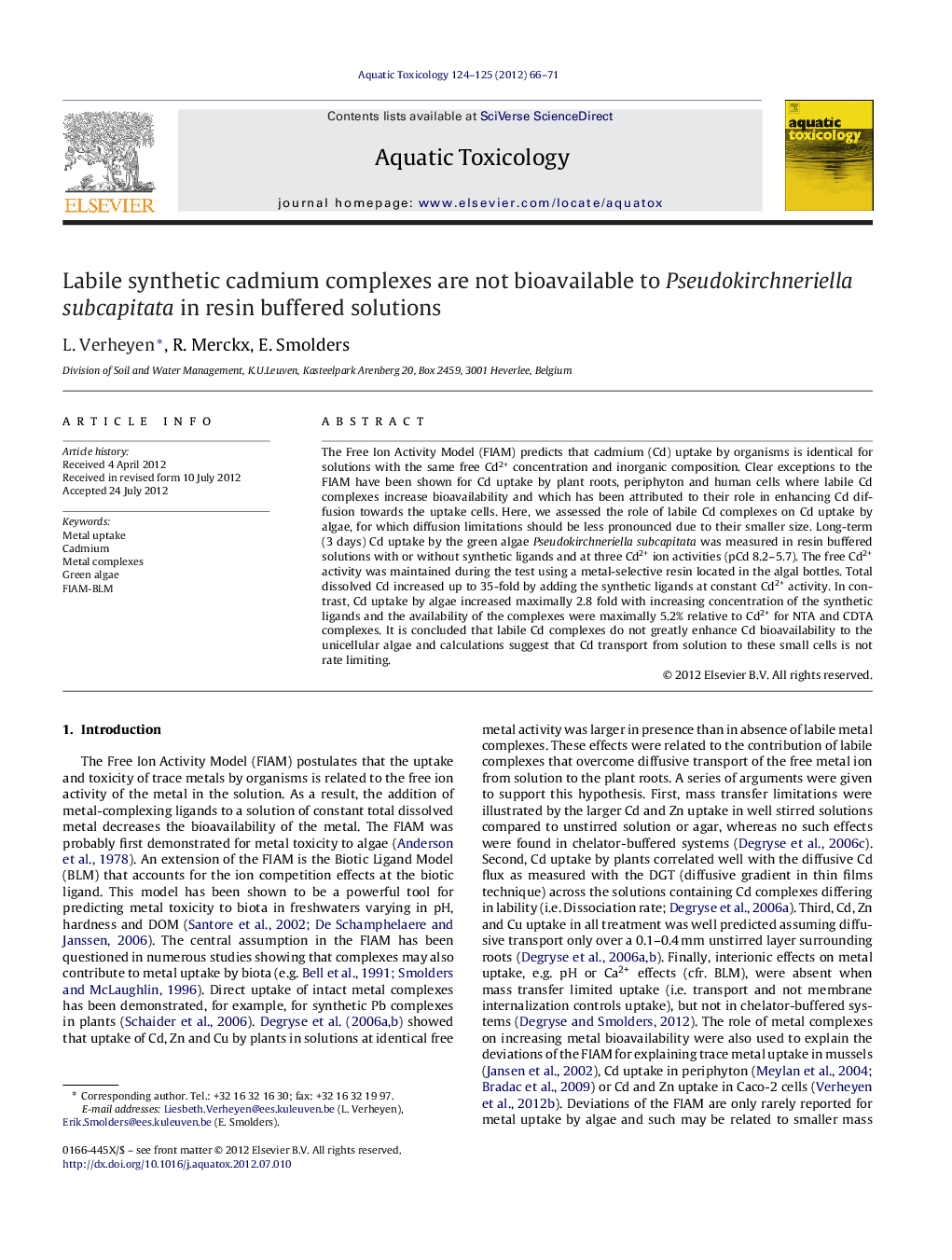| Article ID | Journal | Published Year | Pages | File Type |
|---|---|---|---|---|
| 6382756 | Aquatic Toxicology | 2012 | 6 Pages |
The Free Ion Activity Model (FIAM) predicts that cadmium (Cd) uptake by organisms is identical for solutions with the same free Cd2+ concentration and inorganic composition. Clear exceptions to the FIAM have been shown for Cd uptake by plant roots, periphyton and human cells where labile Cd complexes increase bioavailability and which has been attributed to their role in enhancing Cd diffusion towards the uptake cells. Here, we assessed the role of labile Cd complexes on Cd uptake by algae, for which diffusion limitations should be less pronounced due to their smaller size. Long-term (3 days) Cd uptake by the green algae Pseudokirchneriella subcapitata was measured in resin buffered solutions with or without synthetic ligands and at three Cd2+ ion activities (pCd 8.2-5.7). The free Cd2+ activity was maintained during the test using a metal-selective resin located in the algal bottles. Total dissolved Cd increased up to 35-fold by adding the synthetic ligands at constant Cd2+ activity. In contrast, Cd uptake by algae increased maximally 2.8 fold with increasing concentration of the synthetic ligands and the availability of the complexes were maximally 5.2% relative to Cd2+ for NTA and CDTA complexes. It is concluded that labile Cd complexes do not greatly enhance Cd bioavailability to the unicellular algae and calculations suggest that Cd transport from solution to these small cells is not rate limiting.
⺠Long-term Cd uptake by the green algae Pseudokirchneriella subcapitata was measured. ⺠The Cd uptake was carried out in the presence of synthetic ligands. ⺠The free Cd2+ activity was maintained during the test using a metal-selective resin located in the algal bottles. ⺠Labile Cd complexes formed with synthetic ligands do not largely enhance Cd bioavailability to the green algae.
